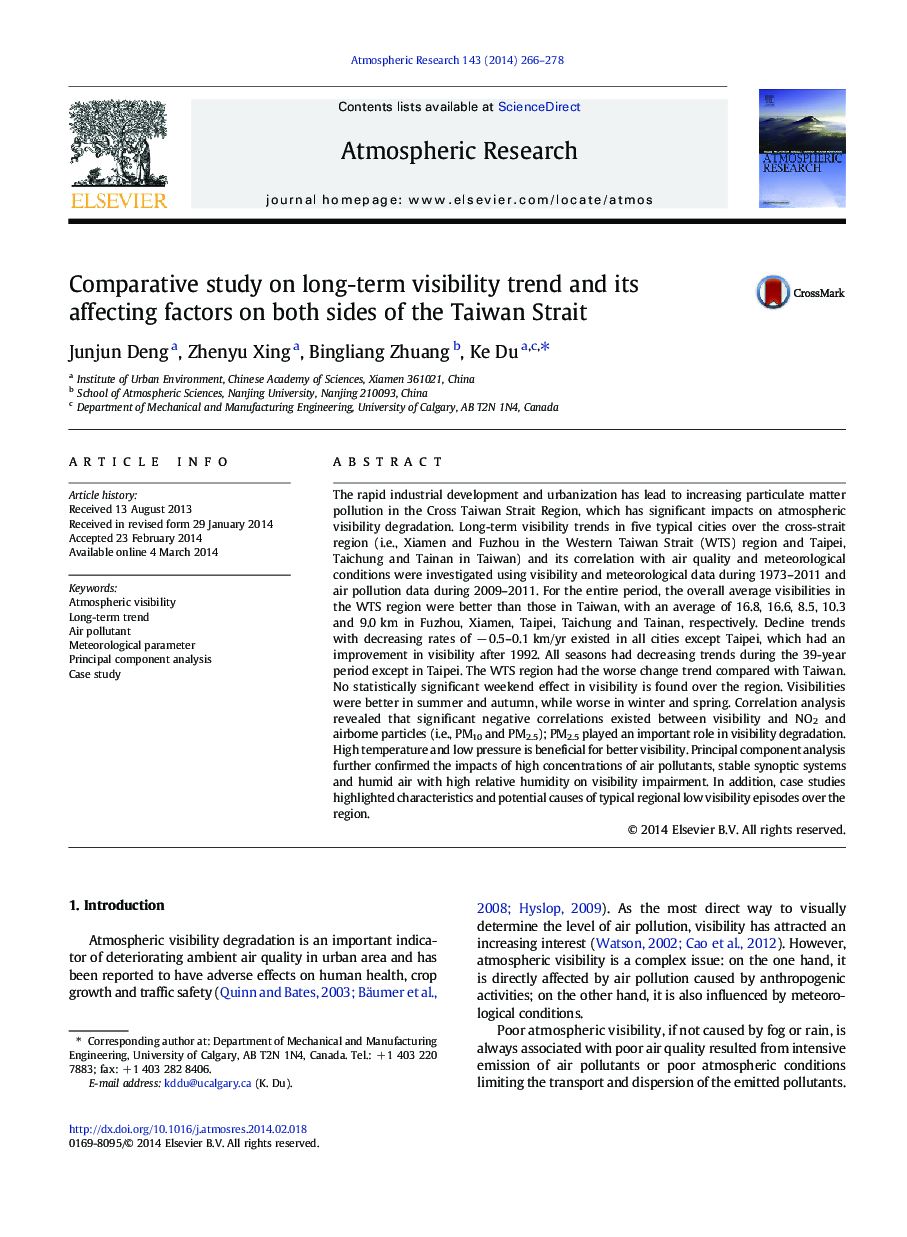| Article ID | Journal | Published Year | Pages | File Type |
|---|---|---|---|---|
| 4449909 | Atmospheric Research | 2014 | 13 Pages |
•The long-term trends of visibility on both sides of the Taiwan Strait were compared.•The WTS region had better overall average visibility but worse changing trend.•Weekend effect on visibility was not found in the five cities.•The impacts of air quality and meteorological factors on visibility were evaluated.•The characteristics and causes of regional low visibility episodes were studied.
The rapid industrial development and urbanization has lead to increasing particulate matter pollution in the Cross Taiwan Strait Region, which has significant impacts on atmospheric visibility degradation. Long-term visibility trends in five typical cities over the cross-strait region (i.e., Xiamen and Fuzhou in the Western Taiwan Strait (WTS) region and Taipei, Taichung and Tainan in Taiwan) and its correlation with air quality and meteorological conditions were investigated using visibility and meteorological data during 1973–2011 and air pollution data during 2009–2011. For the entire period, the overall average visibilities in the WTS region were better than those in Taiwan, with an average of 16.8, 16.6, 8.5, 10.3 and 9.0 km in Fuzhou, Xiamen, Taipei, Taichung and Tainan, respectively. Decline trends with decreasing rates of − 0.5–0.1 km/yr existed in all cities except Taipei, which had an improvement in visibility after 1992. All seasons had decreasing trends during the 39-year period except in Taipei. The WTS region had the worse change trend compared with Taiwan. No statistically significant weekend effect in visibility is found over the region. Visibilities were better in summer and autumn, while worse in winter and spring. Correlation analysis revealed that significant negative correlations existed between visibility and NO2 and airborne particles (i.e., PM10 and PM2.5); PM2.5 played an important role in visibility degradation. High temperature and low pressure is beneficial for better visibility. Principal component analysis further confirmed the impacts of high concentrations of air pollutants, stable synoptic systems and humid air with high relative humidity on visibility impairment. In addition, case studies highlighted characteristics and potential causes of typical regional low visibility episodes over the region.
